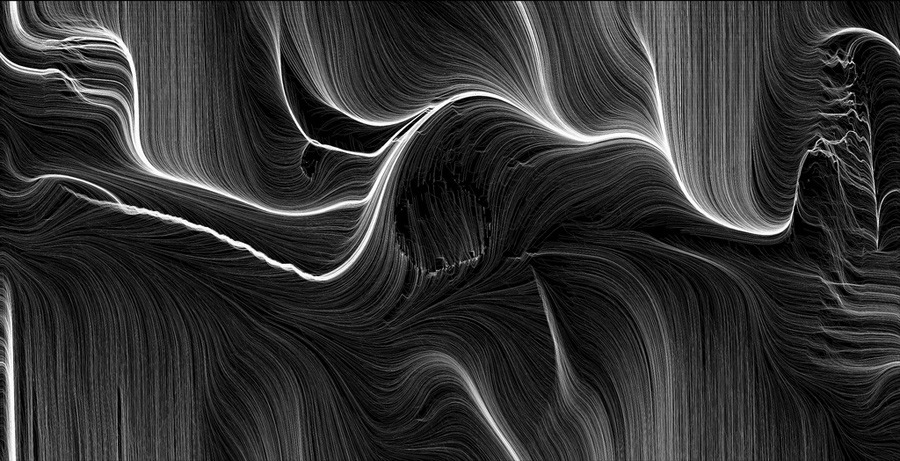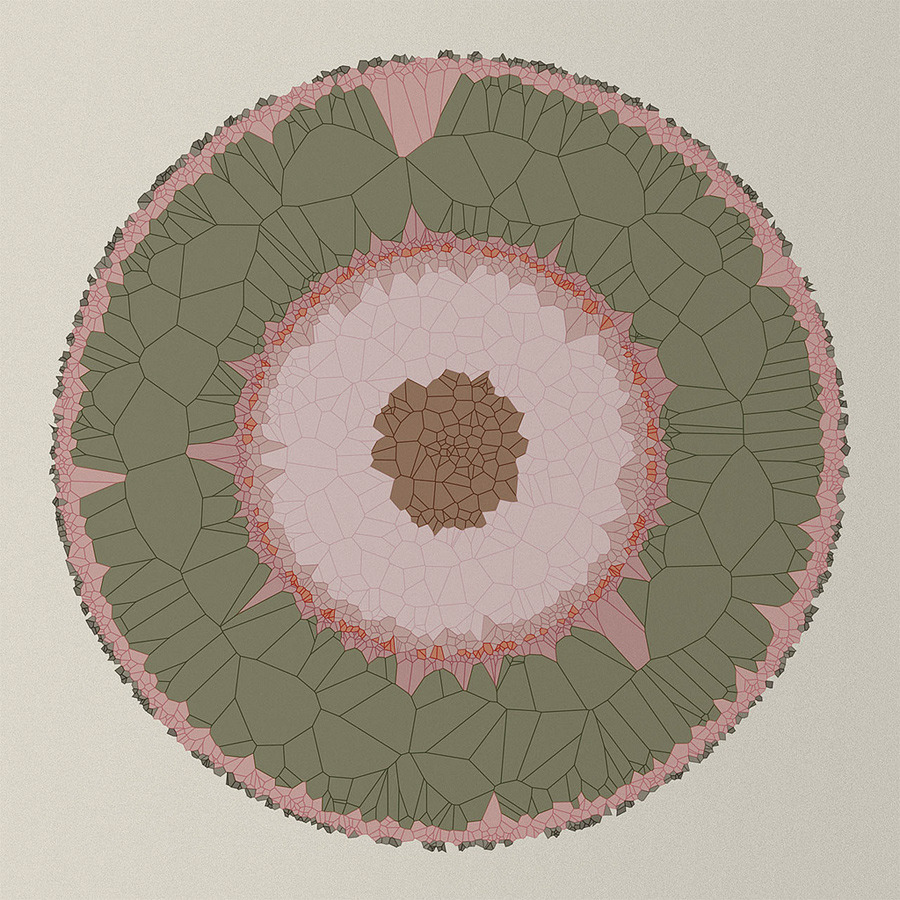The Beauty of Generative Art
Generative Art refers to artwork that has been created algorithmically, often with the aid of a computer and widely available software. It can be easy to create very beautiful and detailed works with just a few simple rules and some basic programming knowledge. Ranging from the highly chaotic to the extremely ordered and blending everything in between, generative art reflects many of the rules and patterns we observe in nature and strikes a beautiful balance between science and art.
Even though generative art and design actually has a fairly long history through the use of analog systems, its influence continues to grow. Especially with the advent of many open-source applications freely available to download all over the web.
 John Whitney – Stills of early computer animation
John Whitney – Stills of early computer animation
John Whitney, who is known to be one of the fathers of computer animation used both mechanical and digital techniques to create beautiful psychedelic lights and patterns. Perhaps his most well-known work was his collaboration with Saul Bass for the title sequence of Alfred Hitchcock’s 1958 film masterpiece, Vertigo. These styles not only had an incredible influence on film and animation, but could also be seen as a precursor to electronic music visualization. To view John Whitney’s art in action, you can view a playlist of his work here.
Generative art is extremely flexible, and there is often as much creativity going into the process and rules of the algorithm as there is crafting the desired style of output.
Data visualization can take on almost any form. The above image from Diana Lange’s Nature of Code series is reminiscent of a geode or cross-section of other crystal forms. It was created with a program made in Processing, a digital sketchbook intended to teach coding though the use of visual arts. The program searches Flickr for photos, then analyzes the color data. It then arranges the information into cells of different sizes, based on the frequency and brightness of each color in the image.
 John Greene – Tessellated pattern made with Fleen
John Greene – Tessellated pattern made with Fleen
If you are less inclined to use code and prefer a more visual tool set, there are still options out there. Fleen lets users draw custom geometries and develop operators that generate into various compositions. You can then save the art as both vector or high resolution raster formats for further customization, incorporating into designs, or just to get that awesome custom tapestry printed.
 Leonardo Solaas – Propagaciones 10
Leonardo Solaas – Propagaciones 10
There seems to be an almost instinctive attraction to generative art. We are pattern-seeking creatures after all, and the processes used in its practice are strongly tied to the rules and physics of our universe. When creating with generative tools you may very well have some idea how you intend the art to look, but part of the fun is watching the emergence of beautiful and unpredictable results that blossom on their own, removing much of the ego from the creative process.
If you are interested in generative art, check out some of the links below. There are plenty of tools out there, and this list will continue to grow.
Links to some cool generative art software and applications:
Processing
A free open-source software sketchbook and one of the most widely used tools for creating generative art. Built to promote software literacy and to and aid the learning of code through with visual art.
NodeBox
A free open-source and cross-platform application for creating generative art and data visualization.
Fleen
Fleen is an experimental pattern generator that creates tesselative art from user defined geometry.
Jenn3d
Jenn3d is an application for visualizing Coxeter polytopes.
ISO Flock
A swarm simulator with tons of customizable behaviors and perimeters.
Electric Sheep
What do computers dream of? Electric Sheep is an abstract visualization program run by thousands of people all over the world.
Ultra Fractal
Multi-layer fractal generation and rendering.
Mandelbulber
An experimental application used for generating and exploring three-dimensional fractals.
Context Free
Context Free uses simple written instructions called grammars which can generate images with surprising speed and complexity.
Categories: Downloads Generative Art Graphic Design Resources

